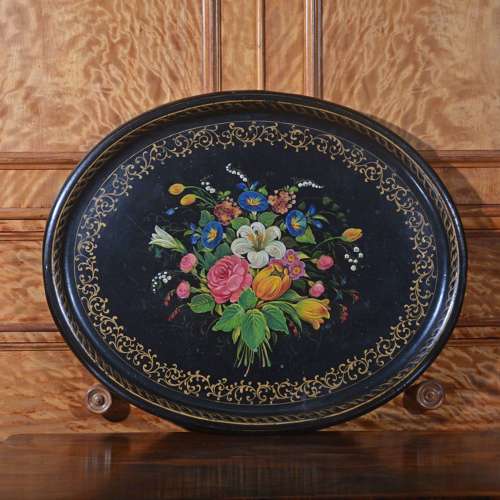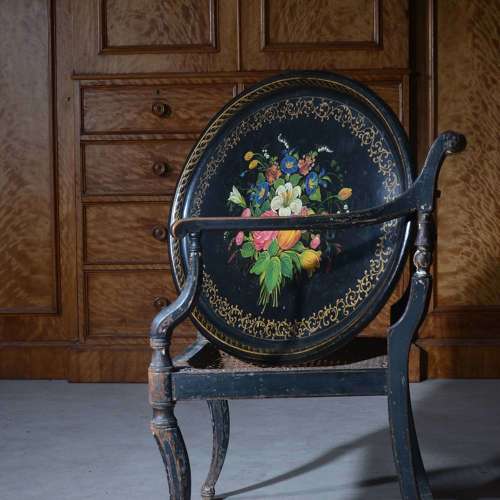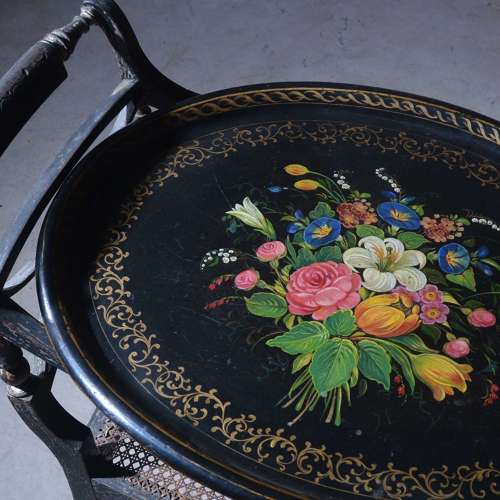
Dealer Information
Dealer: Leslie and BaggottLocation: Castle Douglas, United Kingdom
Tel: 0155650927007881 823 369
Email: mail@leslieandbaggott.com
 |
Dealer InformationDealer: Leslie and BaggottLocation: Castle Douglas, United Kingdom Tel: 0155650927007881 823 369 Email: mail@leslieandbaggott.com |
|

Code: LB13964
Dimensions:W: 76cm (29.9")H: 4cm (1.6")D: 62cm (24.4")
Website: https://www.antiquesboutique.com/misc/papier-mache-tray-by-henry-clay-of-london/itm129900
Black Japanned Gilt Papier Mache Tray By Henry Clay of London
An oval papier-mâché tray with a shaped edge, decorated with flowers. The base stamped "CLAY LONDON" and Numbered 8958.
English, circa 1800
Henry Clay, japanner and papier-mâché manufacturer (fl.1772–d. 1812)
Henry Clay achieved wealth and fame upon a patent taken out on 20 November 1772 for a ‘new Improved Paper-ware’. This involved pasting sheets of paper together and then oiling, varnishing and stove-hardening them. This process produced panels suitable for coaches, carriages, sedan chairs and furniture. It was claimed that the material could be ‘sawn, planed, dove-tailed or mitred in the same manner as if made in wood’. The trade in this new material developed rapidly with smaller furniture wares such as teatrays, waiters, caddies and dressing cases finding particular favour. These were japanned and decorated with painted scenes and classical (Etruscan) and Chinoiserie subjects.
About 1785 Clay transferred his business to London, trading from 18 King St, Covent Garden. He had been reported in 1781 as producing ‘Several pieces of superb furniture which now adorn the royal residences’ and King George III seemed happy in expressing his utmost approbation.
Clay's commissions for the Royal family, the nobility and gentry are well documented. As early as 1776 Boulton & Fothergill reported him as making japanned knife cases and in 1778 Horace Walpole purchased two waiters, a card rack, a tea caddy and a table decorated by Paul Sandby, from him. By 1787–88 Clay was supplying waiters, tea boards etc. to Carlton House for the Prince of Wales, and in June 1800 supplied him with four large paper tea trays finely painted with four views of the Landgrau of Hessen-Cassel at a cost of 25 guineas each.







